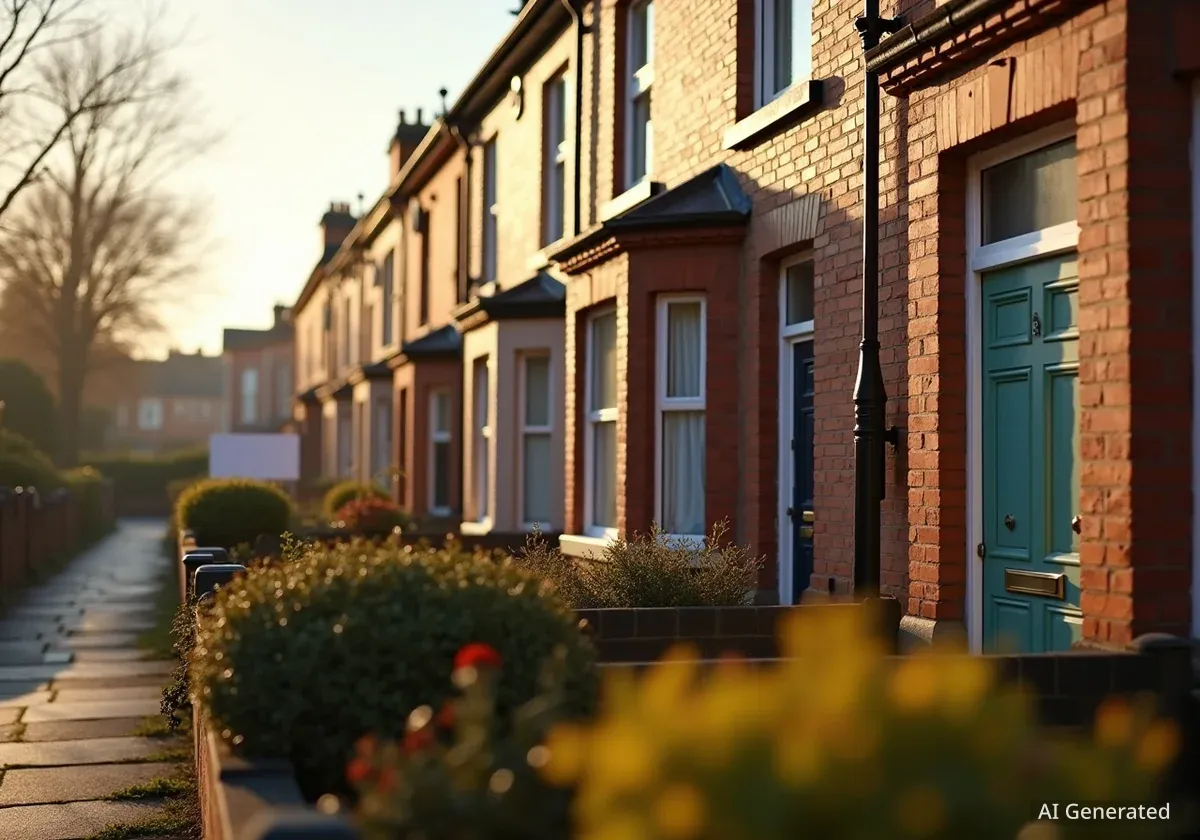House prices in Liverpool have seen a significant increase over the past year, with the average home now costing £16,000 more than it did 12 months ago. According to the latest figures from the Office for National Statistics (ONS) for the year to July, the average property price in the city reached £182,000.
This represents a 9.7% annual rise, a rate of growth that outpaces the national average and positions Liverpool as a key area of property value acceleration in the North West. This trend is reflected across the wider Merseyside region, though Liverpool has experienced the most substantial percentage increase.
Key Takeaways
- The average house price in Liverpool increased by 9.7% to £182,000 in the 12 months to July.
- This is an absolute increase of £16,000 compared to the previous year.
- All Merseyside boroughs saw an increase in average house prices, with Sefton seeing the second-largest rise.
- The North West region experienced a 4.8% growth rate, significantly higher than London's 0.7%.
- The average UK house price increased by 2.8% to £270,000 over the same period.
Merseyside Property Market Analysis
The rise in property values is not limited to Liverpool; all boroughs across Merseyside have recorded price increases. However, the scale of this growth varies significantly from one area to another, highlighting diverse local market dynamics.
Price Changes Across the Boroughs
Sefton recorded the second-largest increase in the region. The average house price there rose by 7.9%, also adding £16,000 to the typical property value, bringing it to £219,000. Sefton now has the highest average house price in Merseyside.
In Knowsley, buyers can expect to pay an average of £189,000 for a home, following a 6.4% increase over the last year. The Wirral saw a more modest rise of 3.4%, with its average property price now standing at £210,000.
St. Helens experienced the slowest growth in the region, with a 2.0% increase. The average house price in St. Helens is now £172,000, making it the most affordable borough in Merseyside for property buyers.
Merseyside House Prices at a Glance
- Liverpool: £182,000 (+9.7%)
- Sefton: £219,000 (+7.9%)
- Knowsley: £189,000 (+6.4%)
- Wirral: £210,000 (+3.4%)
- St. Helens: £172,000 (+2.0%)
The National Property Landscape
The property market trends observed in Merseyside are part of a wider national picture that shows a clear regional divergence. While the UK as a whole saw average house prices increase, the rate of growth was not uniform across the country.
The average UK house price rose by 2.8% in the 12 months to July 2025, reaching £270,000. This is an average increase of £7,000 per home. While this shows positive growth, it is a slowdown from the 3.6% annual growth rate recorded in June.
A Return to Growth
The recent increase in UK house prices marks a recovery from a period of decline. The period between July 2023 and March 2024 was the first time since 2012 that national house prices had fallen on an annual basis. In July 2023, for example, prices had decreased by 0.7% compared to the previous year.
Regional Disparities in Growth
The data reveals a stark contrast in market performance between the North and South of England. The North West, where Merseyside is located, saw a strong annual growth rate of 4.8%. This was surpassed by the North East, which led the country with a remarkable 7.9% increase in average house prices.
In contrast, the London property market has been struggling. The capital recorded an increase of just 0.7% over the last 12 months. This sluggish performance is further highlighted by the fact that 13 London boroughs actually saw property prices decrease during this period.
Some of the most significant falls in London were in Wandsworth (-6.4%), Hammersmith and Fulham (-5.3%), and the City of Westminster (-4.8%).
UK Property Hotspots and Cold Spots
While Liverpool's 9.7% growth is substantial, other areas in the UK have seen even more dramatic changes in their property markets. These hotspots are predominantly located in the North of England and Scotland.
The UK's Fastest-Growing Markets
Sunderland has emerged as the UK's top property hotspot. The average home in the North East city cost £147,000 in the year to July, a 12.7% increase compared to a year earlier. This rapid growth underscores the strong performance of the property market in the North East.
Other areas with double-digit growth include:
- Renfrewshire: +11.0% (Average price £162,000)
- Perth and Kinross: +10.8%
- County Durham: +10.4%
- Halton: +10.2%
- Hartlepool: +10.0%
Areas with Falling Prices
While many regions are experiencing growth, 61 of the UK's 360 local authority areas have seen a fall in average house prices over the last year. The most significant decrease was recorded in Eastbourne, a seaside town in East Sussex. The average home there sold for £243,000, which is 10.4% less than a year earlier.
Other areas with notable price drops include Ceredigion in Wales (-6.8%) and Mid Devon (-5.6%).
Affordability Across the UK
Despite the recent price rises, Merseyside remains a relatively affordable place to buy a home when compared to the national average and especially when compared to the most expensive areas.
Most Affordable Places in the UK
For those looking for the lowest entry point into the property market, Scotland and the North of England offer the most affordable options. The cheapest place to buy a home in the UK is Inverclyde, where the average property costs just £114,000.
- Inverclyde: £114,000
- Burnley: £125,000
- West Dunbartonshire: £125,000
- East Ayrshire: £129,000
- Hyndburn: £129,000
The data from the ONS clearly indicates a robust property market in Liverpool and the wider North West, driven by strong demand and increasing values. This trend stands in contrast to the more subdued market conditions in London and parts of the South, highlighting a continuing shift in the UK's economic and property landscape.





